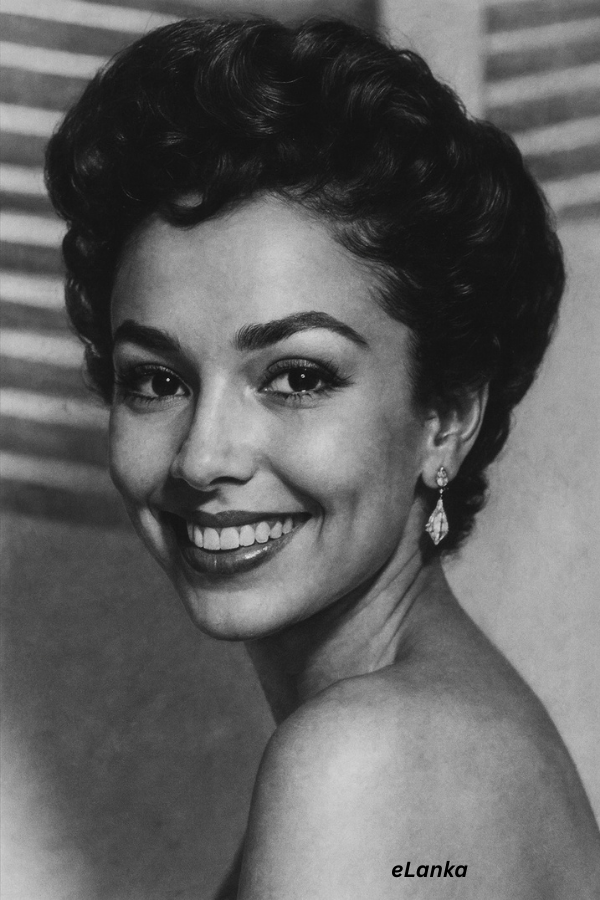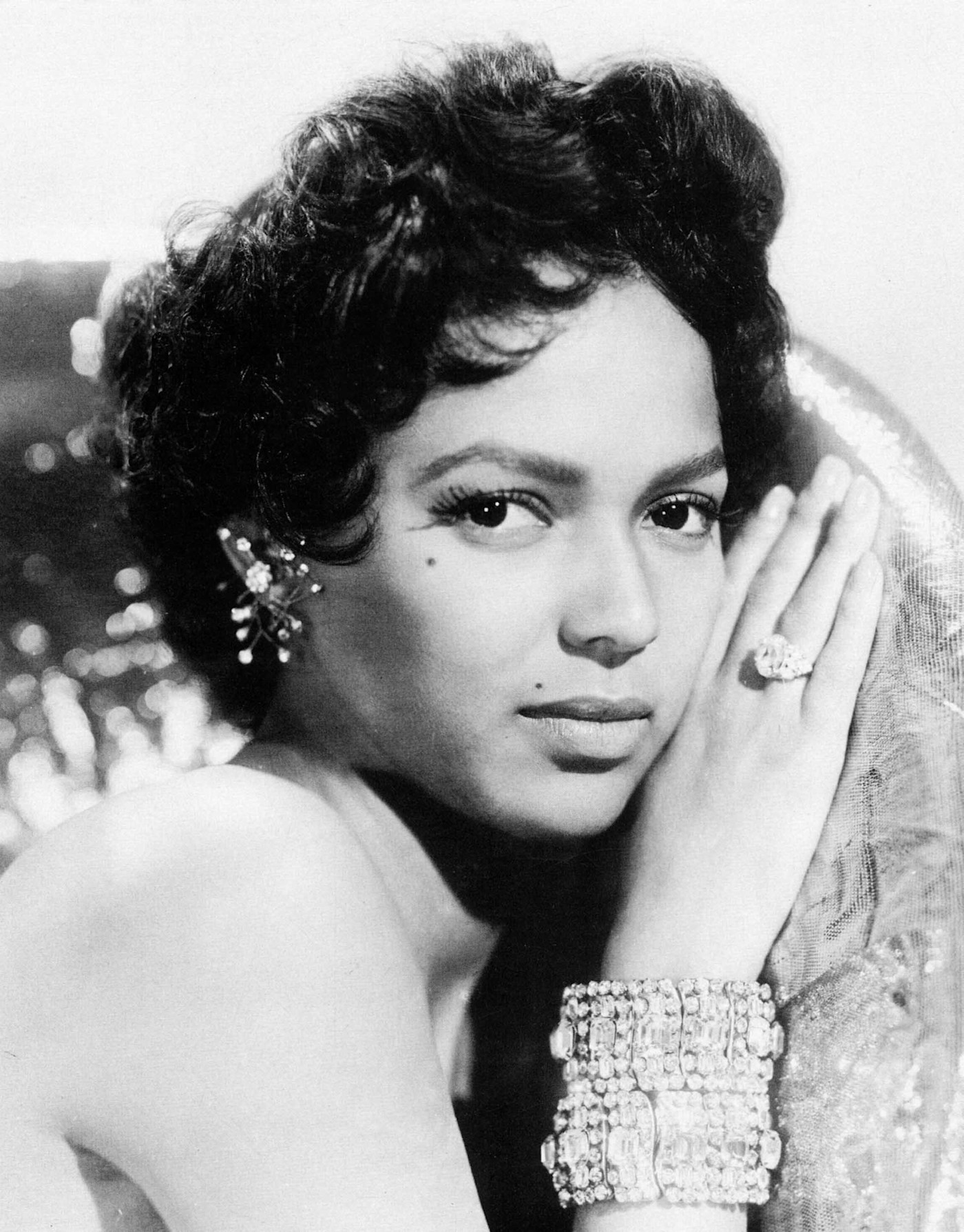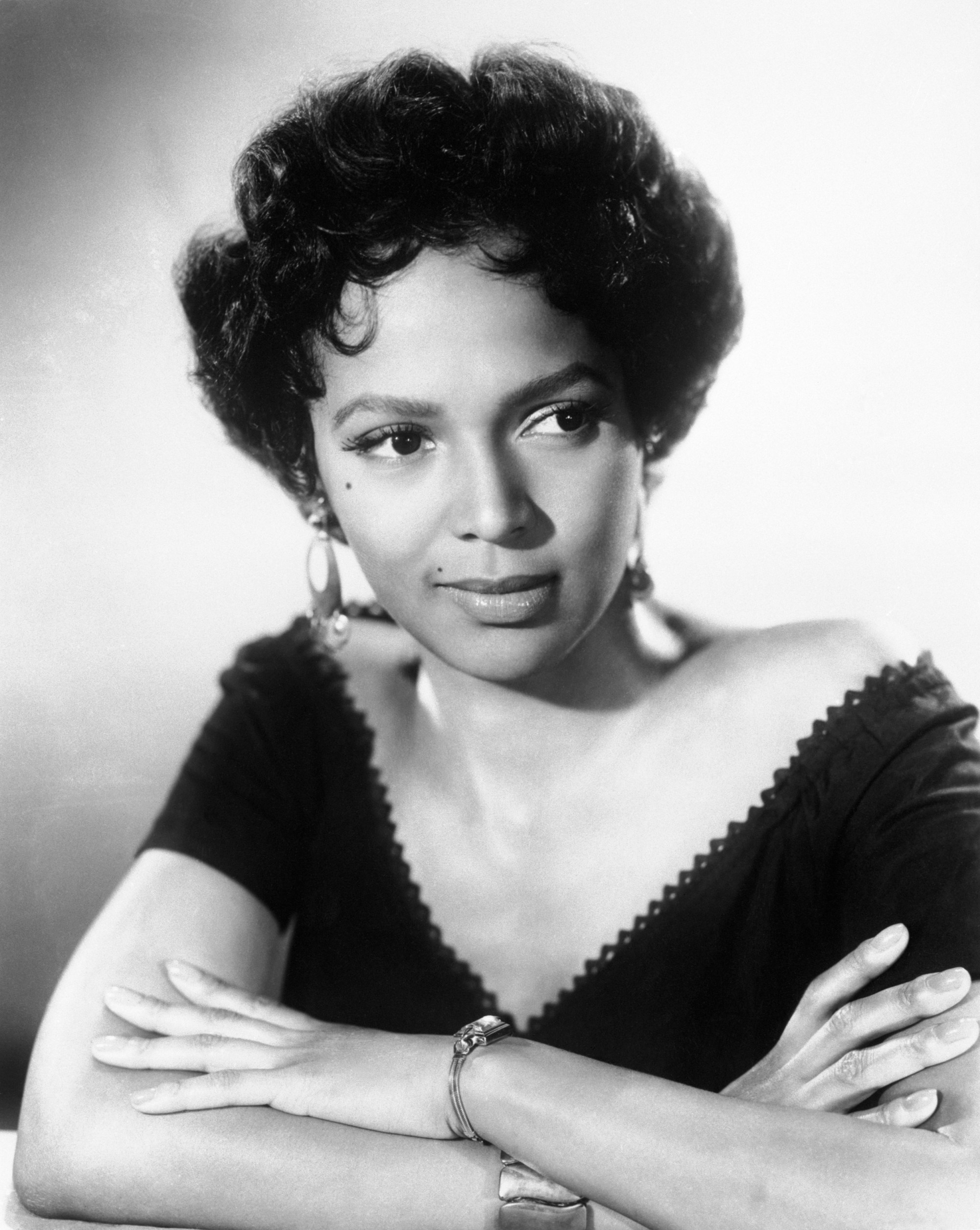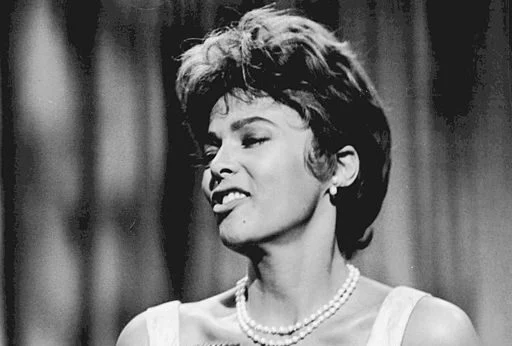DOROTHY DANDRIDGE (1922-1965) – BY SIR CHRISTOPHER ONDAATJE (Special to: The ANCHORMAN)
Source : Dirk Tissera Facebook
Image Source : dressparade.org
Sir Christopher Ondaatje writes about the glamorous but turbulent life of the actress, singer and dancer who was the first black performer to be nominated for an Academy Award for Best Actress.
She died under mysterious circumstances when she was forty two years old
DOROTHY DANDRIDGE (1922-1965)
BY SIR CHRISTOPHER ONDAATJE
(Special to: The ANCHORMAN)
“If I were white I could capture the world.”
– Dorothy Dandridge
Dorothy Dandridge (photo right) was born on 9 November 1922 in Cleveland, Ohio to aspiring entertainer Ruby Dandridge and Cyril Dandridge, a Baptist Minister. Her parents separated before she was born. Her mother taught her two daughters, Vivian and Dorothy, to sing and dance and they toured the Southern United States under the name of “The Wonder Children” for five years while their mother performed in Cleveland. It was difficult to find work during the Great Depression and Ruby and her two children moved to Hollywood where she survived on small domestic-servant roles. Her daughters were renamed The Dandridge Sisters and were booked in several nightclubs including the Cotton Club and the Apollo Theatre. They also appeared briefly in Teacher’s Beau (1935), The Big Broadcast (1936), A Day at the Races (with the Marx Brothers) in 1937; and It Can’t Last Forever (1937).
Image Source : regenerationblackcinema.org
Dorothy Dandridge broke away from her sister and won her first film role as a murderer in Four Shall Die (1940). She also had bit parts in Lady from Louisiana, Sundown, and Sun Valley Serenade in 1941. She performed as a band singer with Count Basie in Hit Parade of 1943, and with Louis Armstrong in Atlantic City (1944) and Pillow to Post in 1945. She also appeared in Tarzan’s Peril (1951), starring Lex Barker and Virginia Houston, and received questionable publicity about her scanty and revealing clothing – but this led to her being featured on the cover of Ebony magazine.
She also got a supporting role in The Harlem Globetrotters (1951).
In 1951 she opened in the Mocambo nightclub in West Hollywood to rave reviews, which led to other engagements in New York and London and a return booking at the Mocambo. She was seen by a Metro-Goldwyn-Mayer studio scout who recommended that Production Chief Dore Schary cast her in a starring role in Remains to Be Seen (1953) opposite Harry Belafonte – his first feature film performance. She continued her successful nightclub acts.
“Carmen Jones was the best break I ever had. But no producer ever knocked on my door. There just aren’t that many parts for a black actress.”
In 1953 20th Century Fox began casting the all-black musical film Carmen Jones – Oscar Hammerstein’s adaptation of Georges Bizet’s opera Carmen. Director Otto Preminger, however, chose her for the smaller role of Cindy Lou. Dandridge, on hearing this, confronted Preminger in his office fully made up in the character of the more earthy seductress Carmen. Preminger changed his mind and gave her the leading role together with Harry Belafonte, Pearl Bailey, Brock Peters and Diahann Carroll.
A disappointed Dandridge had her voice dubbed by the more operatic Marilyn Horne – but the film went on to achieve worldwide rave reviews – eventually earning over $10 million at the box office, and making Dandridge one of the first African-American sex symbols. On 1 November 1954 she became the first black woman featured on the cover of Life magazine. Variety magazine stated that:
“Her performance maintains the right hedonistic note throughout.” Walter Winchell called her “bewitching”.
Image Source : goldenglobes.com
Carmen Jones became one of 1954’s highest-earning films, and she earned an Oscar nomination for Best Actress, along with Grace Kelly, Audrey Hepburn, Judy Garland and Jane Wyman. Grace Kelly dubiously won the Award for her performance in The Country Girl.
On 15 February 1955 Dandridge signed a three-movie deal with Darryl F. Zanuck at 20th Century Fox at $75,000 a film. Zanuck intended Dandridge to play parts in The Blue Angel, Under Two Flags, The King and I, and the Lieutenant Wore Skirts. However, her former director (Carmen Jones) Otto Preminger, now her lover, advised her to only take on leading roles. Thus Dandridge rejected the lesser roles which were given to Rita Moreno.
In 1957 Dorothy Dandridge sued Confidential magazine who revealed that a scandalous sexual incident had taken place in the woods behind Lake Tahoe with a white band leader. She accepted an out-of-court settlement of $10,000. She then testified at a similar 1957 criminal libel case where Confidential and other tabloid magazines had published false information about incidents concerning casual sex. Visiting Grauman’s Chinese Theatre the jury determined that Maureen O’Hara could not possibly have performed various sexual acts while seated in the balcony as claimed by the magazine. Dandridge was photographed shaking hands with Maureen O’Hara outside the Los Angeles Courtroom.
“Prejudice is such a waste. It makes you lazy and half-alive. It gives you nothing. It takes away.”
In 1957, after a three-year absence from film acting, Dandridge agreed to appear in Island in the Sun opposite James Mason, Harry Belafonte, Joan Fontaine, Joan Collins and Stephen Boyd. The film was intensely controversial anf the script had to be changed several times to conform with the Motion Picture Production Code which disallowed interracial relationships. Dandridge, who plays an Indian shop clerk, is shown in an intimate love-embrace with the white John Justin. The scene was not cut from the film and, despite the controversy, the film received favourable reviews and good box office receipts.
Image Source : americacomesalive.com
Dandridge next agreed to film Tamango (1958) opposite the German actor Curd Jürgens. When the original script called for Dandridge to swim in the nude and spend a greater part of the film in a threadbare rag swimsuit she threatened to leave the film. Eventually the script was changed, but the passionate kiss between Dandridge and Jürgens avoided Motion Picture Production Code censure as it was an Italian film production. Nevertheless Tamango was not released in the United States until the latter part of 1959. It remained her first and only screen kiss with a white actor.
Dandridge, in 1958, was offered the starring female role in Porgy and Bess by Metro-Goldwyn-Mayer – but the film was plagued with criticism from the African-American community who thought the stereotyping of black peoplr was negative and degrading.
The director Rouben Mamoulian was replaced by Otto Preminger but a fire on the set and a costly long production resulted in bad reviews and a $2 million loss.
Malaga (1959) was Dandridge’s last film appearance. She played a European woman for the first time opposite Trevor Howard and Edmund Purdom. The film was a low-budget British jewel robbery thriller that created some notable sexual tension between Dandridge and Howard, causing it to be withheld from international release until the next year, and in the United States for three years.
Image Source : facebook
“Have you ever caught sight of yourself by accident and you see yourself from the outside? That’s who you really are.”
Dorothy Dandridge had a wayward and stormy personal life. She married the dancer and entertainer Harold Nicholas on 6 September 1942 and their only child Harolyn Suzanne Nicholas was born with brain damage, requiring constant care. Nicholas abandoned the family in 1948 and they divorced in 1951. She began an affair with director Otto Preminger while filming Carmen Jones in 1954 – an affair that lasted four years. He took control of her acting career – a mistake which she later regretted. She became pregnant by him in 1955 but was forced to have an abortion by the studio – 20th Century Fox.
Image Source : wikipedia
The affair ended when she realised that Preminger had no intention of leaving his wife.
Dandridge married Jack Denison on 25 June 1959, but divorced in 1962 amid financial setbacks and accusations of domestic violence. She discovered that her financial managers had swindled her out of all her savings and that she owed $139,000 in back taxes. She had to sell her Hollywood home, place her daughter in a state medical institution, and move to a small apartment in West Hollywood.
On 8 September 1965 she was found naked and dead by her manager Earl Mills.
She had been scheduled to fly to New York the next day to prepare for her nightclub engagement at Basin Street East. A Los Angeles pathology institute determined that her death was caused by an accidental overdose of imipramine – a tricyclic antidepressant. However the Los Angeles County Coroner’s Office concluded that she died of a fat embolism resulting from a foot fracture sustained five days earlier.
Dorothy Dandridge is rightfully recognised as being a major contributor to the image of the black American in American motion pictures. A private funeral service was held on 12 September 1965. She was cremated and her ashes interred in the Freedom Mausoleum at Forest Lawn Memorial Park in Hollywood Hills, Los Angeles.
– Sir Christopher Ondaatje is the author of The Last Colonial. The author acknowledges that He has quoted liberally from Wikipedia; and from Dorothy Dandridge by Donald Bogle (2012).





























